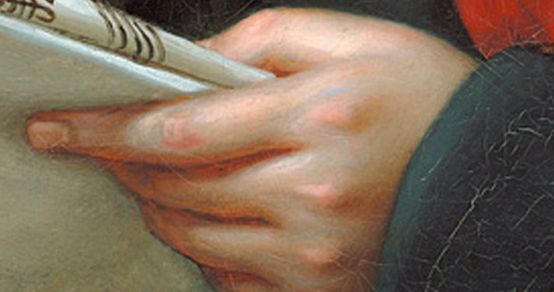String Quartet No. 13
Beethoven every Friday: to mark his 250th birthday, we take a look at one of his works every week. Today it's the String Quartet No. 13 in B flat major.

When Ignaz Schuppanzigh returned to Vienna in April 1823, he remarked during his first visit to Beethoven: "I'm going to visit him in the country, where we want to compose a new quartet together." However, the decisive impetus for the composition of a whole series of string quartets may have been a letter from Prince Nikolai Galitzin, in which he immediately asked for "un, deux ou trois nouveaux Quatuors" asked. However, the premiere of the first of this series on March 6, 1825 (E flat major op. 127) was already disappointing - and made it clear that Beethoven was looking far into the future with his late string quartets. A comment on the demands of the work, which Schuppanzigh entered in a conversation notebook of the deaf composer in the course of a debate, is noteworthy in this regard: "There are no mechanical difficulties in it, only the originality makes it difficult, which one cannot grasp at first sight."
Beethoven himself was well aware of the interpretative and intellectual demands. The plan for the first movement of the String Quartet in B flat major op. 130 can be found in a sketchbook: "last quartet for Galitzin with a serious and sluggish introduction". In the end, the Adagio was not as weighty, but it appears to be interlocked with the following Allegro in a contrasting manner. The Andante in third place and the famous Cavatina (5th movement) are both preceded by a concise Scherzo. The "Grosse Fuge", which was later replaced by a rondo finale and printed separately, originally formed the conclusion. In his biography of Beethoven (3rd edition, 1860), Anton Schindler described the conceptually self-contained original version of the composition as "Monstrosity of all quartet music".
The fact that composers and audiences sometimes perceive new works differently is not just a phenomenon of the 20th century. Karl Holz, Secundarius in the Schuppanzigh Quartet, recalled the premiere of Opus 130 on March 21, 1826: "The production Performance was never in Beethoven's presence. The audience was enthusiastic, astonished or questioning, depending on the circumstances, but never denied it out of reverence. They understood - or did not understand. At the 1st production of the B Major In the second quartet, when the fugue still formed the finale, the small intermediate movements in B minor and G major had to be repeated at the stormy request of the audience .... The fugue passed without being understood. After the premiere Beethoven was waiting for me in the nearest inn. I told him that the two pieces would have to be repeated recte: had to. Yes! he said angrily, this Tidbits! Why not the Joint?" Emphasis in the original
Listen in!







